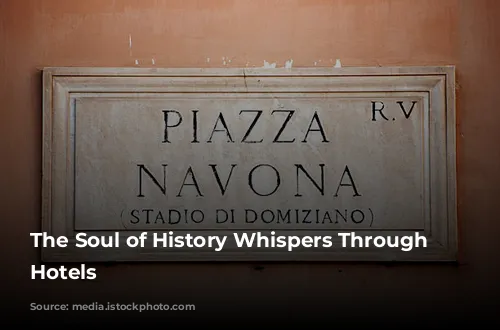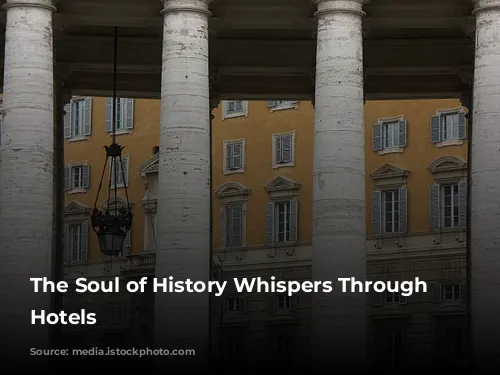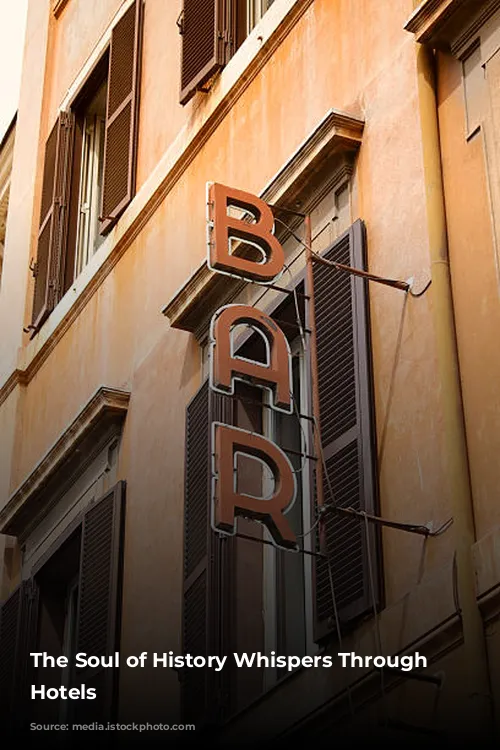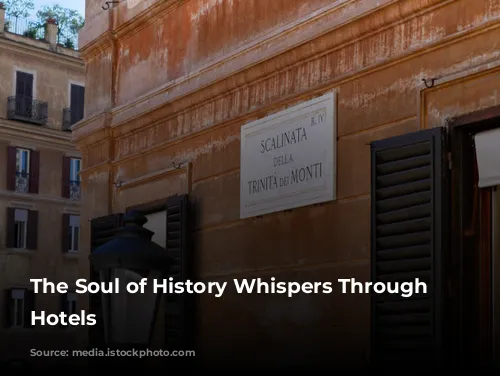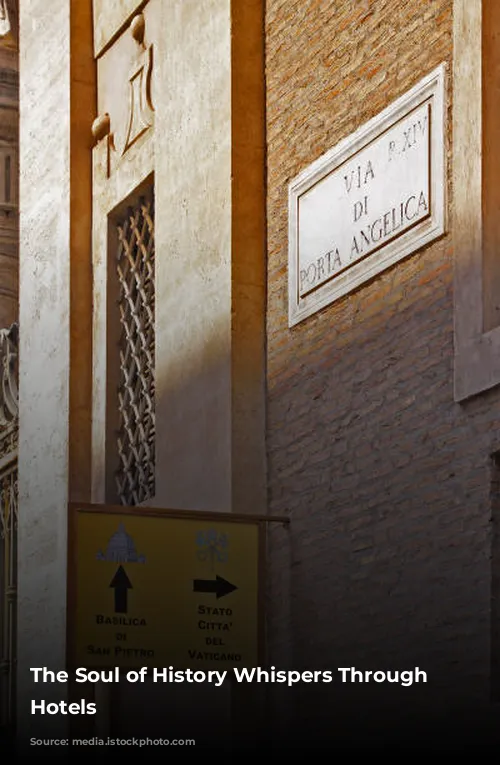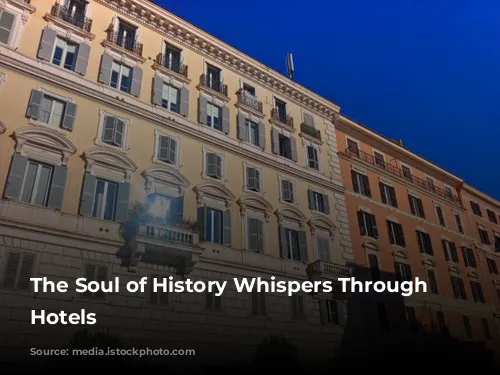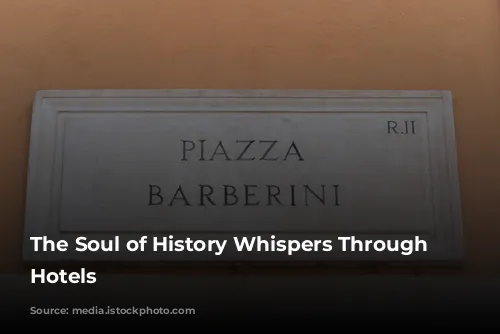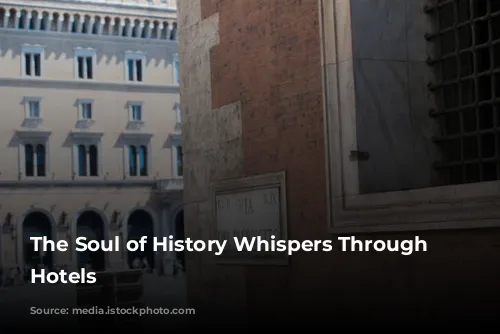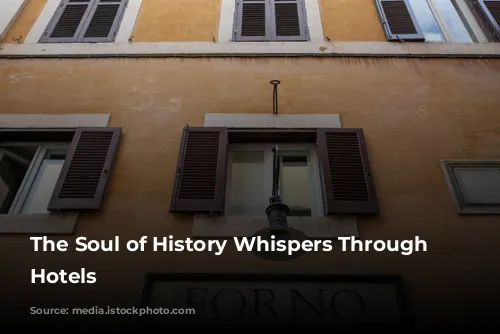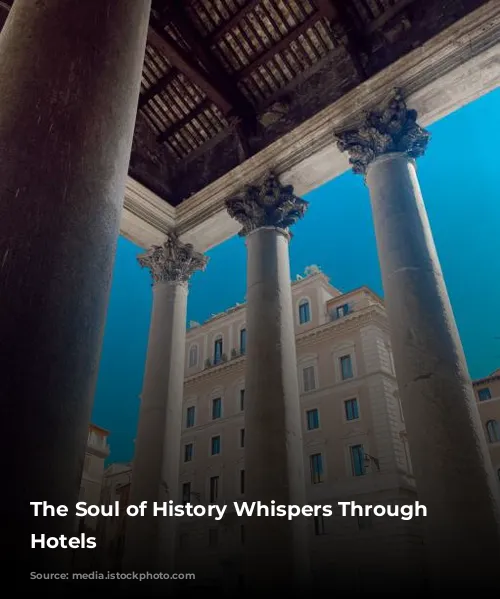Imagine stepping into a hotel where time seems to stand still, where the echoes of history linger in the air, and the elegance of a bygone era whispers through the halls. These aren’t just any hotels; they are living testaments to Rome’s enduring charm. They are historical gems that embody the city’s rich past, each one a story waiting to be discovered.

A Timeless Journey Through Rome’s Historic Hotels
Rome, the Eternal City, breathes history, and its hotels reflect this enduring spirit. From Renaissance inns to Parisian-inspired havens, these grand structures have witnessed centuries of stories unfold within their walls. Writers, artists, scientists, royalty, and dignitaries have all passed through their doors, leaving behind a legacy of intrigue and grandeur. To honor this legacy, Federalberghi Roma, a group dedicated to preserving the city’s hospitality heritage, has established the Comitato Alberghi Storici. This esteemed committee, comprised of over 40 hotels built before 1950, celebrates the history and unique charm of these magnificent institutions.
One of the oldest gems in Rome’s crown is the Albergo del Sole, once known as the Locanda del Montone (The Ram Inn). This intimate hotel, tucked away in a prime location facing the Pantheon, exudes a timeless allure. A lush internal garden, bursting with flowers and palm trees, creates a tranquil oasis within the bustling city. Inside, 18th-century frescoes grace the walls, transporting visitors to a bygone era. The hotel’s history is etched into its very being, with commemorative plaques honoring poet Ludovico Ariosto, who graced its halls in 1513, and composer Pietro Mascagni, who celebrated the premiere of his opera “Cavalleria Rusticana” here. The Albergo del Sole’s story stretches back to 1467 when it welcomed the soldiers of Emperor Frederick III of Habsburg. Over the centuries, it has hosted a distinguished roster of guests, including the enigmatic Count of Cagliostro, and, more recently, literary icons Jean-Paul Sartre and Simone de Beauvoir.
Just a stone’s throw away, in the square adorned by Gian Lorenzo Bernini’s “Minerva’s Chick”, stands the Grand Hotel de la Minerve. This elegant palace, built in 1620, was once the residence of the prestigious Portuguese Fonseca family. In 1835, it was transformed into a grand hotel by the Sauve family, French entrepreneurs who arrived in Rome following Napoleon’s footsteps. The Grand Hotel de la Minerve became a magnet for luminaries of the arts and literature. Its suites, bearing names like Stendhal, Herman Melville, George Sand, and Vittorio Alfieri, whisper tales of creativity and brilliance. The exquisite decorative elements crafted for its halls by sculptor Rinaldo Rinaldi, Antonio Canova’s first apprentice, add a layer of sophistication and artistry, enhancing the building’s timeless elegance.
In the heart of the Tridente area, on Via del Corso, stands the Grand Hotel Plaza, a testament to the merging of old and new. Originally established as an inn during the twilight years of Papal Rome, it quickly became a gathering place for Rome’s elite – nobles, artists, politicians, and royalty. Legend has it that Princes Umberto and Margherita of Savoy watched the Roman Carnival unfold from its windows. Among its distinguished guests were Pietro Mascagni, the Empress Carlota of Mexico, and renowned directors Luchino Visconti and Federico Fellini.
Just outside Rome’s Porta del Popolo, the Hotel de Russie stands as a testament to timeless elegance. Described by French poet Jean Cocteau as “a paradise on earth,” the hotel became a sanctuary for artistic brilliance, especially in 1917 when it hosted Pablo Picasso and Cocteau as they prepared for the first ever Cubist ballet. Converted into a hotel in the late 19th century, it hosted a veritable procession of royalty, earning the nickname “Hotel of the Kings.” The Romanovs, Prince Jérôme Napoléon, King Gustav of Sweden, Ferdinand and Boris of Bulgaria, and many more graced its halls. Giuseppe Valadier, a renowned architect, designed the hotel’s breathtaking secret garden, hidden behind the hotel, a verdant oasis of tranquility. The garden features a series of cascading terraces that ascend towards the Pincio, offering a picturesque view of the city.
Across Piazza del Popolo, on Via della Penna, sits the Hotel Locarno, a refined Art Nouveau gem. Inaugurated in 1925, this five-star hotel, named after its Swiss owners’ hometown, quickly became a focal point for Rome’s artistic and intellectual circles. In the 1960s, it blossomed into a haven for artists, actors, and intellectuals. The hotel’s guest list reads like a who’s who of artistic brilliance, including Jean-Michel Basquiat and Jorge Luis Borges.
Nestled atop the Spanish Steps, in the heart of Rome, stands the Hotel Hassler Villa Medici, a jewel of elegance and history. Founded in 1893 by Swiss hotelier Albert Hassler, the hotel became a gathering place for the Italian and international political, economic, and cultural elites. The Kennedy family, Prince Rainier of Monaco and Grace Kelly, Charlie Chaplin, and Gabriel Garcia Marquez are just a few of the names etched into its Golden Book.
Equally captivating is the Sina Bernini Bristol, a grand hotel chosen by Paolo Sorrentino as the backdrop for his film “The Great Beauty.” Opened in 1874 under the name Hotel Bristol, it was later renamed to honor Gian Lorenzo Bernini, the creator of the Triton Fountain in nearby Piazza Barberini. The hotel’s long and illustrious history has seen the footsteps of royalty, including the Emperor of Brazil, the Princes of Wales, the Rockefellers, and the Vanderbildts, who sought refuge from the winter chills in Rome’s embrace.

The Dolce Vita on Via Veneto
Via Veneto, one of Rome’s most iconic streets, has always been a beacon of style and sophistication. Built in the 1880s, it was the Belle Époque street, lined with luxury hotels and Parisian-inspired cafes. In the 1950s and 1960s, it transformed into a playground for movie stars and artists, gaining international fame thanks to Federico Fellini’s masterpiece, “La Dolce Vita.”
The first hotel to grace Via Veneto’s grand avenue was the Majestic, built in 1889. Designed by Gaetano Koch, architect of the American Embassy and the Bank of Italy, the hotel boasts a unique “piano-like” layout. Its modernity, architectural design, tapestries, exquisite furniture, and frescoes by Domenico Bruschi in the ballroom have made it a haven for royalty, princes, princesses, and Hollywood stars since the 1920s.
Built in 1900, the Palace Hotel was originally designed to host ambassadors. Its Neo-Renaissance style, crafted by architect Carlo Busiri Vici, reflects the grandeur of the era. After World War II, it served as the American Embassy Library, before reopening in the 1990s as the Ambasciatori Palace, preserving its original splendor. The wrought iron balustrade of its Liberty staircase is a testament to the hotel’s enduring elegance.
The Grand Hotel Palace, built in 1927, is a striking example of Roman modernist architecture. Once known as the Albergo degli Ambasciatori, this architectural gem was designed by Marcello Piacentini and embodies the transition from Art Nouveau to Art Deco style. Stepping through its elegant wrought iron and bronze gate, visitors are transported to a timeless atmosphere, adorned with stuccos, crystal chandeliers, marble floors, and stunning frescoes by the Venetian artist Guido Cadorin. The frescoes depict the hotel’s owners, Marcello Piacentini and his family, along with an unexpected addition: the iconic architect Gio Ponti, who gazes out from a column with an ironic smile.
